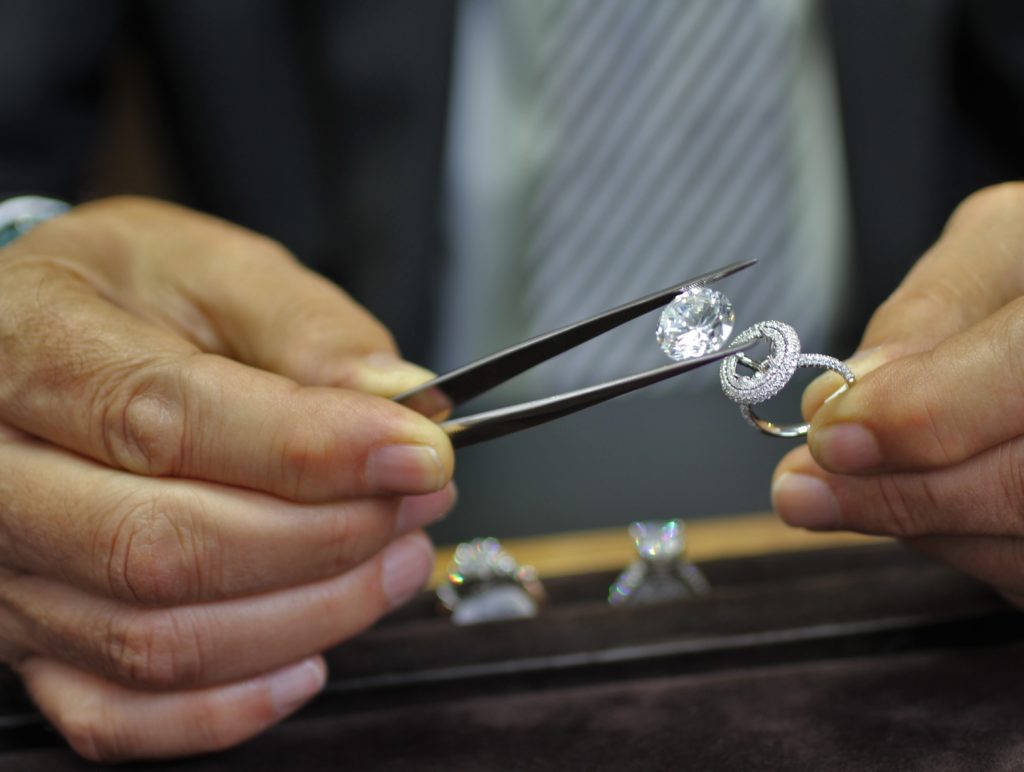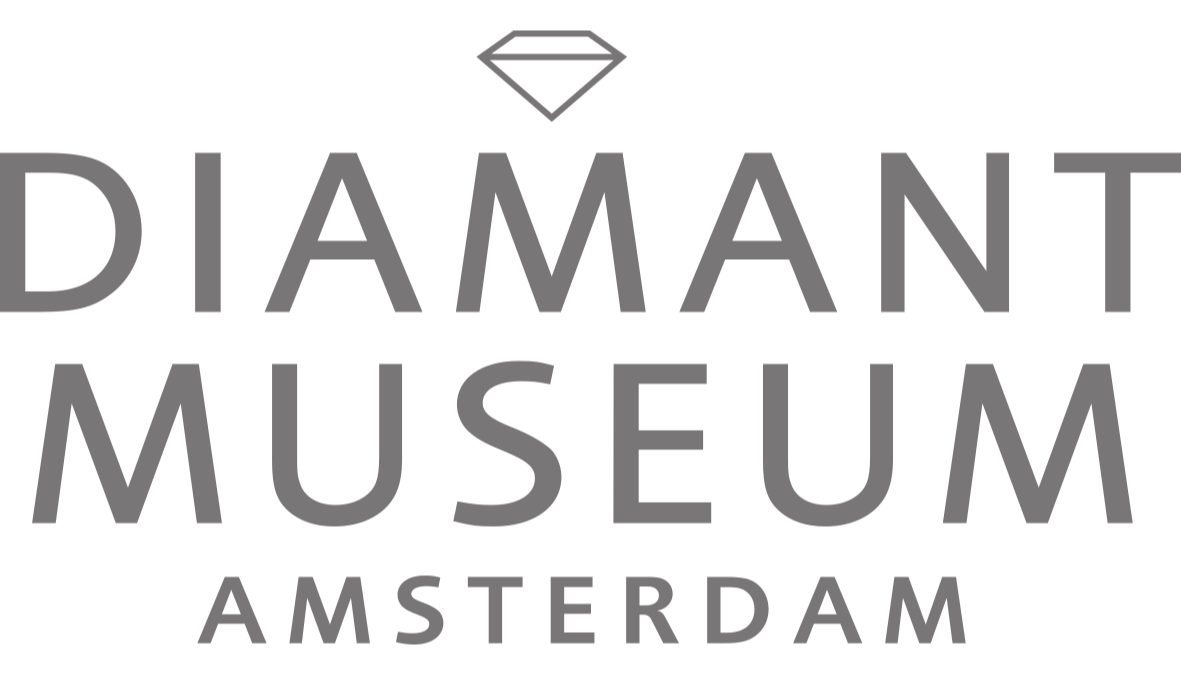The manufacture of a piece of jewelry
Although a solitaire (single, loose) diamond is splendid, many think that it is only really shown to advantage as part of a piece of jewelry. Goldsmiths have traditionally occupied an important place in the diamond industry. Together with designers, enamellers, engravers and setters, they ensure that the diamond is rendered fit to be worn in all its glory.
Gold or silver
Until the first quarter of the 20th century, silver and especially gold were used as precious metals for jewelry in which diamonds were set. In Europe, diamonds were often set into silver mounts or placed on silver foil. this makes the stone glitter more and makes it appear larger.
Platinum
When it became technically possible to refine and process platinum, this costly metal became increasingly popular for use in jewelry. Its combination of flexibility and hardness makes platinum suitable for making very fine settings, in which the diamond comes to its best advantage.


Pendant
Pendant consisting of 6 unfinished points.

Pendant
Pendant consisting of 5 tablet stones and 5 classic roses.

Pendant
Pendant with tablet stones and classic roses on the upper side.

Allegorical figures
Allegorical figures in diamonds. (1 - 4: From ‘Juwelenboek van Hertogin Anne’ (‘Jewellery book of Duchess Anne’), Hans Muelich, 1560) (Collection: Bavarian State Library, Munich)

Pendant
Pendant in enamelled gold with classic tablets and rosettes, ca. 1600. (Collection: Schatzkammer Residenz, Munich)

Isabella van Habsburg
Isabella van Habsburg (1566 - 1633), 1600 by Frans Pourbus (II). (Collection: Rijksmuseum Amsterdam)

Maria de Médicis
‘Maria de Médicis, Queen of France’ (1573 - 1643), 1610 by Frans Pourbus (II). Her dress is richly decorated with pearls and precious stones. Her crown is set with diamonds and pearls, and the top is adorned by the Petit Sancy, a pear-shaped diamond of 35 carats. (Collection: Réunion des Musées Nationaux, Paris)

Karnphul
A 17th century ‘karnphul’ (‘ear flowers’), worn by women at the Mughal court, with tablet-cut diamond, cabochon ruby, pearl and emerald. (Courtesy: Christie’s, London)

Jigha
A ‘jigha’ with tablet-cut diamonds and ruby petals set in gold with pendant emeralds, North India, 18th century. (Courtesy: Christie’s, London)

Maria Christina de Bourbon
Maria Christina de Bourbon, Queen of Spain (1806 - 1878), around 1829, by Vicente Lopez. 19th century profusion of adornments. (Collection: Museo Prado, Madrid).

Kahanjar
A ‘kahanjar’, a curved dagger from North India, covered in gold leaf and set with tablet-cut diamonds, pearls and cabochon rubies and emerald. (Courtesy: Christie’s, London)

Interpretation of a Navaratna
A mid-20th century interpretation of a ‘navaratna’ (nine-gem amulet comprising the nine planetary stones of Hinduism), using faceted stones and brilliants set in gold. Ambaji Shinde, ca. 1970. (Courtesy: Christie’s, London)
Men and diamonds

Fath Ali Shah
Fath Ali Shah was the Shah of Persia (1762-1834), Expression of power and wealth. (collection: Bibliothèque Nationale de France)

Louis XIV
'Louis XIV, King in Royal Dress', by Hyancinth Rigaud in 1701. This French king had an impressive collection of diamonds and gemstones. (Collection: Réunion des Musées Nationaux, Paris)

David Beckham
Former football player David Beckham with diamond earring. (Photo: Camera Press / Dan Chung / Hollandse Hoogte)

Tukaji Rao Holkar
Tukaji Rao Holkar, Maharaja van Indore, ca. 1875 (Courtesy: The Royal Archives)

Rapper 50 Cent
Rapper 50 Cent showing his 'Bling-Bling'. (PHoto: Camera Press/Phil Knott/Hollandse Hoogte)

Part of an outfit
Diamonds can also be an important part of today's businessman's outfit

Prince Shuja
Prince Shuja, son of Shah Jahan, of the Mughal Dynasty. In his hand a 'sarpech', an exclusive ornament for the royal turban. (Courtesy: Chester Beatty Library, Dublin)

Maharao Raja Raghubir Singhji
Maharao Raja Raghubir Singhji, Ruler of the Rajput State of Bundi, c. 1875. (Courtesy: Air-India Collection)

